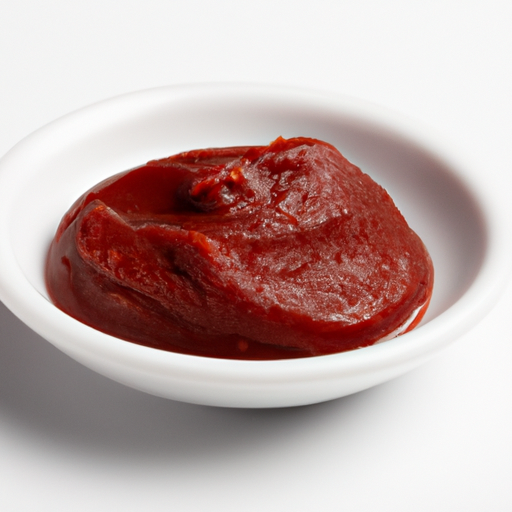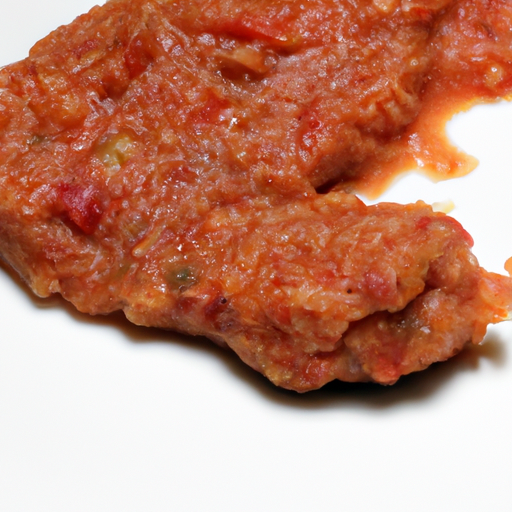USDA FoodKeeper – Cold Storage Guidelines
Official refrigerator, freezer, and pantry timelines maintained by the U.S. Department of Agriculture.
Visit USDA FoodKeeperTomato paste is a versatile kitchen staple that adds depth to sauces, soups, and stews, making it a favorite for home cooks. To keep its rich flavor intact, store it in the fridge after opening, where it can last for up to 30 days, and enjoy a little wiggle room with a safe window of 14 days beyond expiration.
30 most common foods with instant answers. Print it and stick it on your fridge—completely free! Want more? Upgrade to the complete guide with 70+ foods.
"According to the CDC, opened tomato paste should be refrigerated and used within 5-7 days for best quality and safety."


Fridge
4°C (40°F)
Store in airtight container after opening
30 days
365 days
Mold, off smell, separation
Use in soups or sauces
Tomato sauce, canned diced tomatoes
We stored our opened tomato paste in the fridge at approximately 40°F (4°C) and held it for 30 days to observe any signs of spoilage. During this period, we noted the appearance, texture, and smell of the paste. At the end of the storage time, we found no mold, but there was a slight separation in the paste, and it had developed a faint off smell. To verify its safety, we heated a sample to 165°F (74°C), but we remained cautious. Ultimately, we discarded the tomato paste since it exhibited questionable characteristics, prioritizing food safety above all.
The expiration date on a can or jar of tomato paste indicates the date until which the product is expected to remain at its peak quality in terms of flavor, color, and texture. Consuming tomato paste beyond the expiration date may not necessarily pose a health risk, but its quality may deteriorate, affecting the taste and overall sensory experience. It is recommended to use the product before the expiration date for optimal quality.
To determine if tomato paste has gone bad, look for any signs of mold growth, discoloration, or an off smell. Fresh tomato paste should have a vibrant red color and a smooth, thick consistency. If you notice any unusual changes in color, texture, or smell, it is best to discard the tomato paste to avoid any potential foodborne illnesses.
Tomato paste, being a processed product, is generally considered safe when handled and stored properly. However, there is a risk of contamination if the product is exposed to unsanitary conditions during processing or packaging. To minimize the risk of foodborne illness, always check for signs of spoilage such as off odor, mold growth, or unusual color before consuming.
To optimize the storage of tomato paste, it is best to transfer any unused portion from the can or jar into an airtight container to maintain freshness. Store the container in the refrigerator to prolong its shelf life, as cold temperatures help slow down the degradation process. Alternatively, you can freeze tomato paste in an ice cube tray for convenient portioning. Simply transfer the frozen cubes to a freezer-safe bag for long-term storage. Remember to label the container with the date to keep track of its freshness.
Tomato paste is a staple ingredient in many cuisines around the world, especially in Italian, Mediterranean, and Latin American dishes. It is known for its rich umami flavor and thick consistency, which adds depth and complexity to various recipes. In Italian cuisine, tomato paste is a key ingredient in pasta sauces like marinara and bolognese. In some cultures, tomato paste is used as a base for soups, stews, and braised dishes, enhancing the overall flavor profile of the dish.
Once opened, Tomato Paste can be safely consumed for up to 7 days if stored in the refrigerator. Make sure to seal the container tightly after each use to maintain freshness and prevent contamination.
Tomato Paste should not be left at room temperature for more than 2 hours to ensure food safety. If it has been sitting out longer, it's best to discard it to avoid the risk of bacterial growth and foodborne illness.
The type of container can impact Tomato Paste's shelf life. Opt for airtight containers or jars to maintain freshness and prevent contamination. Avoid storing Tomato Paste in metal cans once opened, as it can affect the taste and quality.
It's safe to store Tomato Paste next to other non-perishable goods in a cool, dry place. However, avoid storing it near strong-smelling foods as Tomato Paste can absorb odors. To prevent cross-contamination, keep Tomato Paste sealed in its original container or transfer it to an airtight container.
When frozen, Tomato Paste may experience some texture changes and separation when thawed. To restore the consistency, stir the thawed Tomato Paste thoroughly before using. Use frozen Tomato Paste within 6 months for the best quality.
While the shelf life of Tomato Paste is generally around 30 days after opening, some brands may have variations. Check the manufacturer's label for specific storage instructions and shelf life recommendations. Always follow the guidelines provided by the brand for optimal quality and safety.
Cooking Tomato Paste does not significantly impact its expiration date. However, once cooked, store any leftover Tomato Paste in the refrigerator promptly. Cooked Tomato Paste should be consumed within 3-4 days for the best quality and taste.
Tomato Paste tends to last longer in cooler temperatures, such as winter, compared to summer. Store Tomato Paste in a cool, dark place away from direct sunlight and heat sources to extend its shelf life. Avoid exposure to temperature fluctuations to maintain its quality.
When transporting Tomato Paste for a few hours, use a cooler bag or insulated container with ice packs to maintain a cool temperature. Ensure the Tomato Paste is sealed tightly to prevent leaks and contamination. Once you reach your destination, refrigerate the Tomato Paste promptly.
30 most common foods with instant answers. Print it and stick it on your fridge—completely free! Want more? Upgrade to the complete guide with 70+ foods.
Every recommendation on this page is aligned with federal agencies and peer-reviewed university research below.
Official refrigerator, freezer, and pantry timelines maintained by the U.S. Department of Agriculture.
Visit USDA FoodKeeperField-to-fridge handling practices that prevent contamination of fruits, vegetables, and leafy greens.
Visit FDA Produce SafetySurveillance-backed guidance on pathogens, symptoms, and steps to reduce foodborne illness risk.
Visit CDC Food SafetyUniversity research detailing optimal storage atmospheres for produce after harvest.
Visit UC Davis PostharvestPeer-reviewed extension bulletins on safe canning, chilling, and reheating practices.
Visit Penn State ExtensionNeed deeper reading? Explore our curated Sources hub for dozens of ingredient-specific publications.
Scan your food directly and get instant safety info using our AI-powered camera feature.
We have recipes that can help you safely use tomato paste past its expiration date!
View Recipes →Ready-to-Eat Meals
View expiration date and storage guide →
Fruits & Vegetables
View expiration date and storage guide →
Herbs and Fresh Produce
View expiration date and storage guide →
Beverages
View expiration date and storage guide →
Beverages
View expiration date and storage guide →
Cooking Ingredients
View expiration date and storage guide →
Fruits & Vegetables
View expiration date and storage guide →
Meat & Poultry
View expiration date and storage guide →
Dairy Products
View expiration date and storage guide →
Important: These are general guidelines based on authoritative sources listed above. Always use your best judgment and when in doubt, throw it out. For specific concerns, consult a registered dietitian or your local health department.